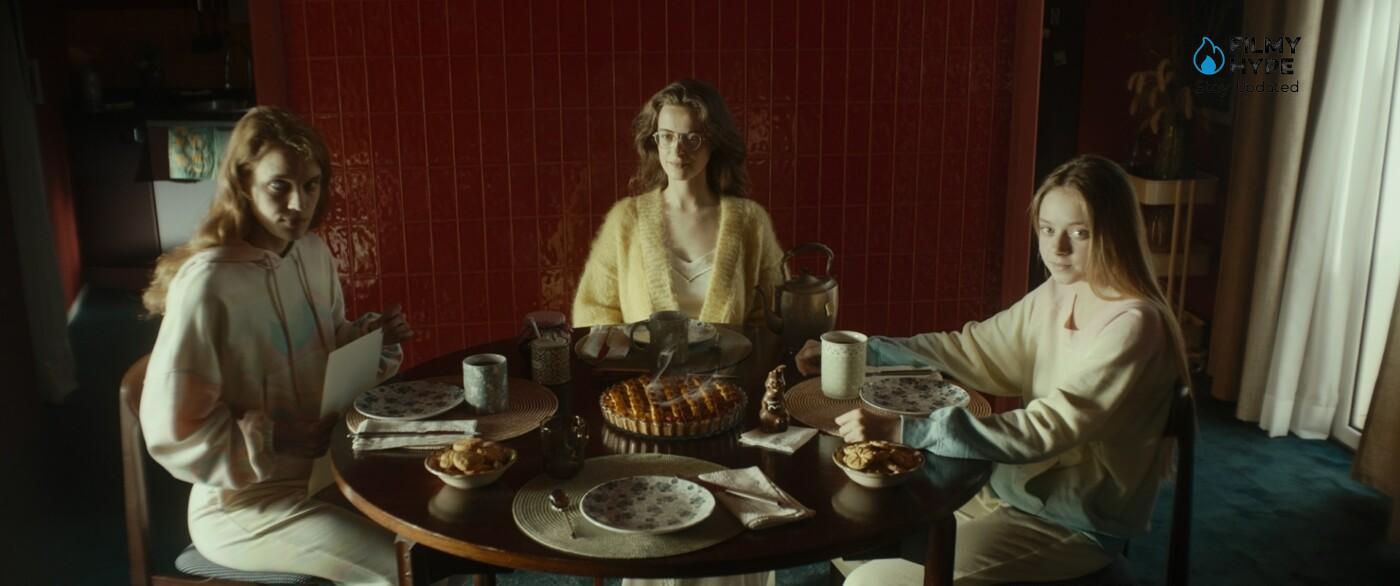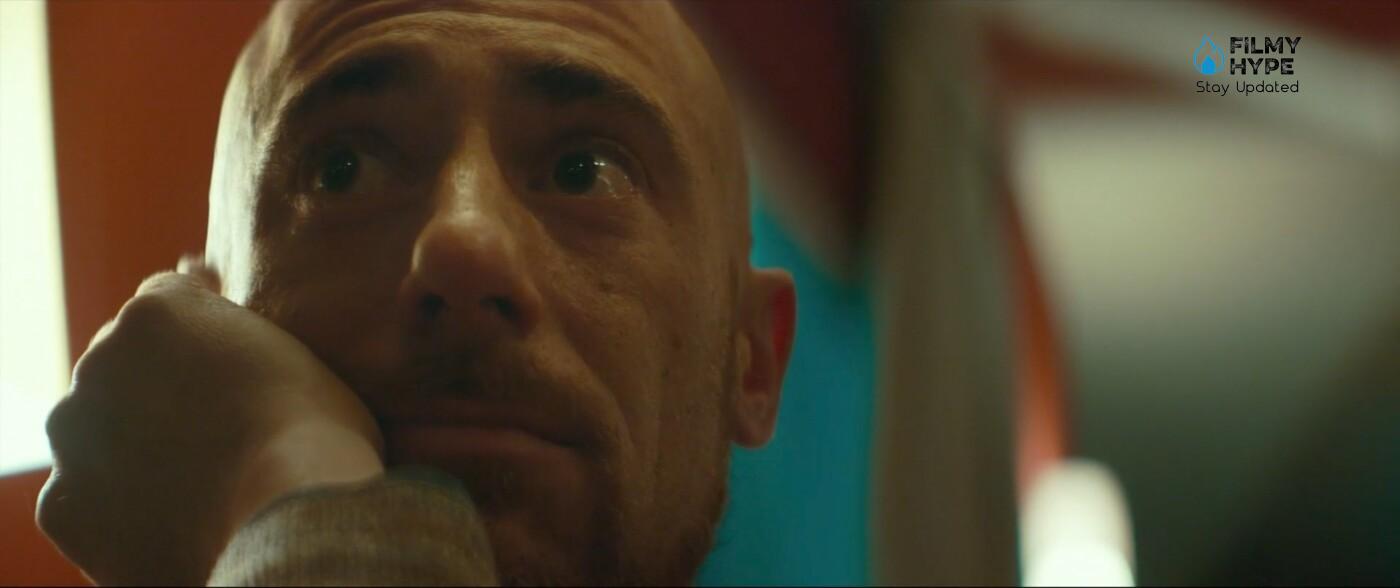America Latina Movie Ending Explained: Who Really Kidnapped the Little Girl in the Basement?
What really happens in Latin America and who has kidnapped the girl that Massimo discovers astonished in his basement and that he decides to keep hidden? The explanation of the plot and the ending of the film.
What really happened and what is the result of the protagonist’s delirium in Latin America, the third film by the D’Innocenzo brothers? The film provides an explanation in its ending and, like any self-respecting psychological thriller, aims to surprise the viewer. The story told by the film is a descent into madness for the protagonist Massimo Sisti (Elio Germano), a wealthy Latina dentist who lives with his beautiful wife and two angelic daughters in a huge, isolated villa in the Lazio countryside.

The film immediately places the protagonist in front of an unsettling event. In fact, one day, going down to the cellar during a small domestic chore, the man finds a girl tied and gagged to a pole in the center of the basement. Massimo is stunned: what is the girl doing there? Who kidnapped her and hid her in the basement of her house? On the ground there are numerous rubbish and empty bottles of water, a sign that the girl (who appears tired and very dirty) has been there for some time. The protagonist is about to call the police when he thinks about it: who would believe his version, the fact that he didn’t know that in the lower floors of his house there is a very young prisoner?
Massimo then decides to take care of the girl, periodically bringing her to drink and eat, despite the manifest hostility and terror that the young woman manifests towards him. In the meantime he will try to figure out who put him in this very difficult situation: if some criminal looking for an isolated place to hide a girl or some acquaintance of his who wants to frame him.
America Latina Movie Ending Explained: Massimo’s Family is a Hallucination
In the film’s finale, Massimo first tries to make the basement flood, thus drowning the girl and summarily getting rid of the problem without getting his hands dirty directly, keeping his feet as an innocent person. Later he has a scruple of conscience and saves the child, calling the police, who arrest him. In the last scene that closes the film we see him in prison, looking in front of him at his wife and daughters, who have not aged a day.
First of all, it is necessary to distinguish what is true and what is imaginary, the fruit of man’s disturbed psyche. The girl in the basement really exists and has been kidnapped, so much so that the police help her immediately and justice will condemn Massimo to jail for his kidnapping and attempted murder. Massimo’s wife and daughters, on the other hand, are the fruit of his feverish imagination. They probably never existed, but if the dentist has had a family for a while, what he sees in the film is a mere hallucination. We understand it from the final scene: who would let a woman and two girls dressed like this into the cell of a prisoner? A real family meeting would take place in the parlor. The three women are hallucinations of Massimo’s mind.

Massimo is therefore a man suffering from psychiatric disorders and prey to hallucinations that he does not understand to be such. Going back through the film, we notice how his friends and work colleagues never mention his family (because it doesn’t exist) and no character ever meets his wife and daughters, who only manifest themselves in the big house where Massimo lives. The same three women deliberately have a dreamy and mysterious air, as well as being very similar to each other. Their clothing is always coordinated, the long hair loose, the ethereal way of appearing and disappearing on the stage, now fulfilling, now frustrating the desires of the protagonist, without ever referring to an idea, an event, a will linked to one’s life: the three women are an expression of tormented interiority of the protagonist.
Is Massimo Kidnapped The Girl?
In this sense, Massimo’s dialogue with his father, who despises him, insults him and exploits him economically, is crucial. The film almost seems to suggest that Massimo’s need for intimacy and familiarity led him to such an obsession as to imagine a non-existent, sweet and ever-present family.
So why kidnap the girl and tie her up in the basement? The film does not give precise answers on the matter, but there are many clues available to the viewer to immediately understand that the person responsible is Massimo, starting from the terrified reaction of the girl in his presence. Not calling the authorities is an illogical move, an instinctive and rational choice for an innocent person to whom the protagonist thinks only for a moment and then quickly sets it aside. Who then would really keep the family in the dark, with the risk that someone will discover the girl and you think it was really him who kidnapped her?
If Massimo really wanted to find out who kidnapped the girl (who is tied hand and foot, so she has no way of feeding herself or fulfilling her bodily needs), he would just have to wait a few hours to find out who comes regularly to feed and quench her thirst, as the lots of rubbish on the ground around the hostage. Massimo does not follow this logical path because it is he who in a dissociated state, takes care of the girl. To divert his attention from the truth, he begins to doubt friends and acquaintances. In the film’s finale, she suspects her family is involved. The women of the Sisti household, however, do not exist, they are projections of the protagonist’s interiority and his need for affection: Massimo believes he is discovering the guilt of the women of his family because he is very close to understanding his responsibility.
In this sense, the flooding of the basement is a symbolic gesture as well as a concrete one, the attempt to purify a dirty place with water, a symbol of his mean and violent gesture. By flooding the basement and killing the girl, Massimo indirectly tries to get rid of the physical proof of his gesture and of the truth: the fact that his family does not exist. The kidnapping of the child itself could be a sick attempt to find a real physical bond with another person, hidden and “underground” compared to the hallucination that allows Massimo to satisfy his enormous need for affection and human connections.
Does America Latina Tell a True Story?
No, it is a fictional story written by the D’Innocenzo brothers and not based on real facts.
What Does The Title Of The Film America Latina Mean?
It is a play on words between the expression to define the southern part of the American continent and the juxtaposition between the American symbolic universe and Latin, the Lazio town where the story takes place.
Who Kidnapped The Girl in America Latina?
Massimo himself, but he does not remember it, because his self that sees his imaginary family as a hallucination is not aware of the other part of his identity that has kidnapped the child and that every day unties her to give her a drink and feed it.
This is why the little girl is frightened of Massimo: because in reality he is her tormentor
What Does The Final Scene Of America Latina Mean?
The appearance of Massimo’s wife and daughters in prison confirms that these are hallucinations of the man’s disturbed mind: a family is certainly not allowed to visit a prisoner in the cell and, moreover, barefoot.

